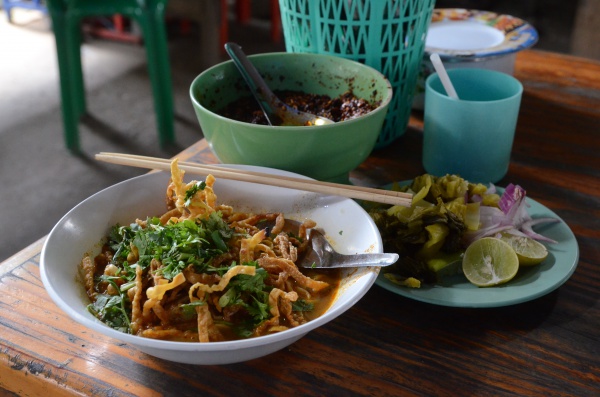Facts About Khao soi
Khao soi, also known as khao soy, is a cherished dish originating from the Chin Haw people that has gained popularity in Myanmar, Laos, and northern Thailand. The name means 'cut rice,' but it might actually derive from the Burmese word for noodles, "khao swè."
Making traditional khao soi noodles involves an intriguing process: spreading rice noodle dough over boiling water, steaming it into a large sheet, and then cutting it with scissors. This technique is still employed in Lao khao soi, whereas northern Thailand has its own unique twist on the dish.
There are two main types of khao soi. The Lao version is a hearty soup featuring wide rice noodles, pork, tomatoes, fermented soybeans, chilies, shallots, and garlic. It's typically garnished with pork rind, bean sprouts, scallions, and cilantro.
The northern Thai version is quite different and closely resembles Burmese ohn no khao swè. It combines crispy deep-fried egg noodles with boiled egg noodles, all served in a rich curry-like sauce made with coconut milk. This version often includes pickled mustard greens, shallots, lime, ground chilies in oil, and your choice of chicken or beef. It's thought to be influenced by Chinese Muslim cuisine. In some parts of northern Thailand, you may find variations that omit the coconut milk and use rice noodles instead.
Khao soi is also popular among the Shan people in Burma and in the Chiang Rai Province of Thailand. These versions can sometimes include curdled blood, similar to another dish called khow suey.
No matter the variation, khao soi remains a street food favorite in northern Thailand, celebrated for its rich flavors and comforting ingredients.

 Cambodia
Cambodia